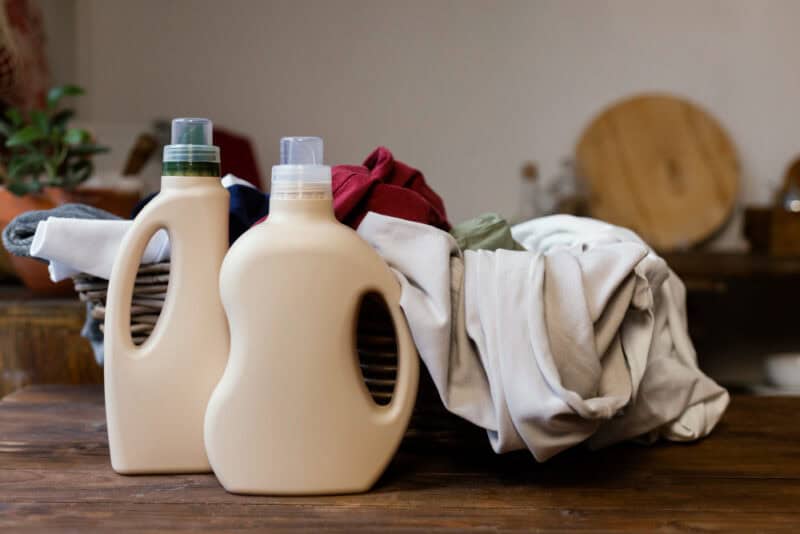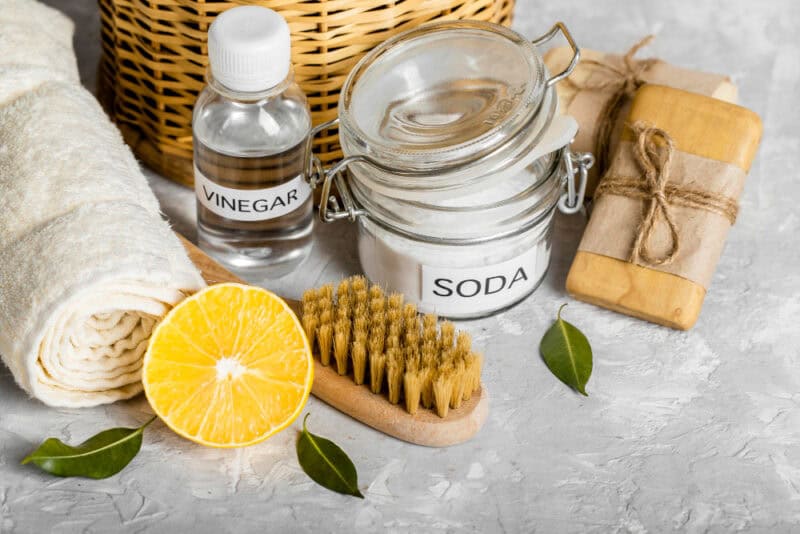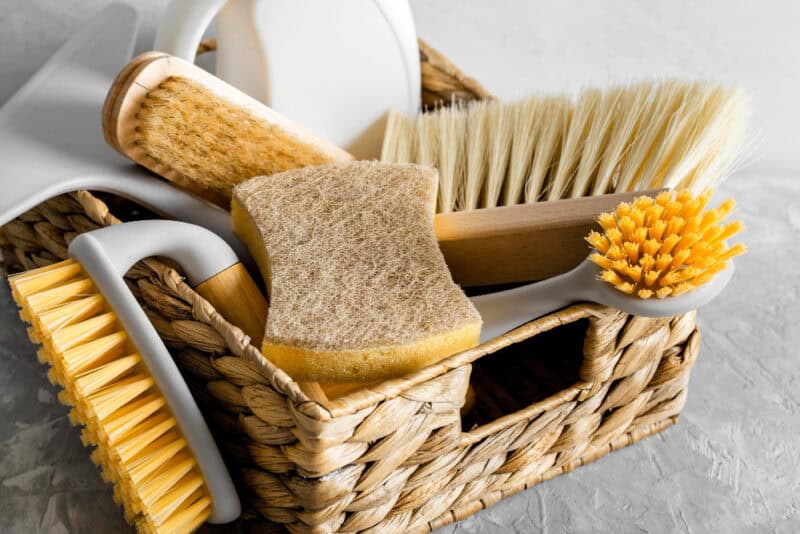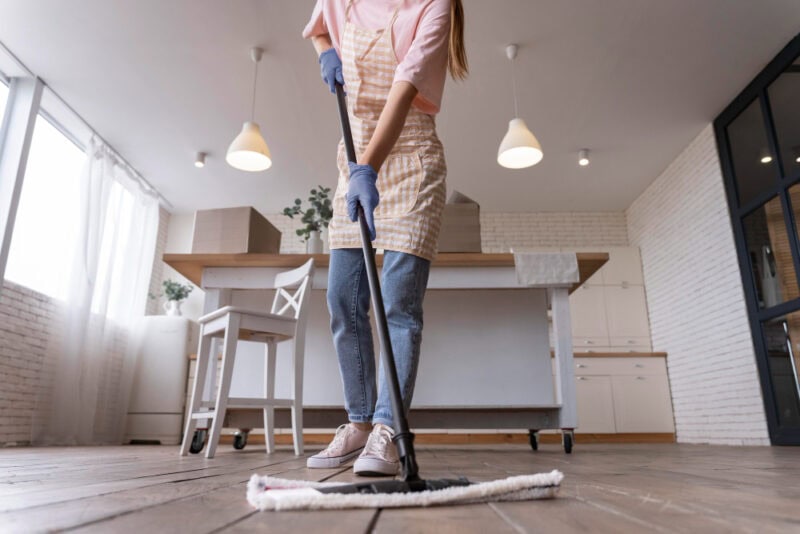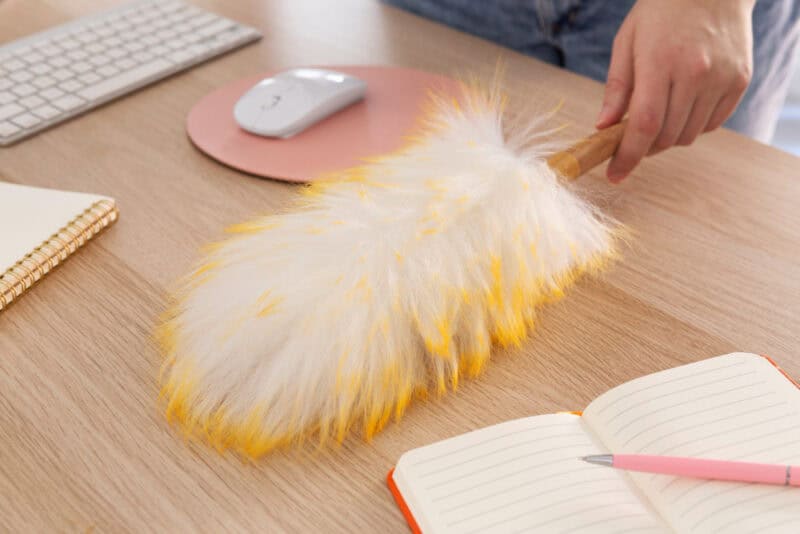With the alarming intensity of climate change being experienced worldwide, everyone, including the government and individuals, is constantly trying new ideas and suggesting different ways to combat this problem.
The growing knowledge of how climate change works has led to several inventions by different companies, industries, and individuals, all contributing to finding solutions to this global issue. Now, the cleaning products industry, in an attempt to develop more efficient products, sometimes uses chemicals that have harmful effects. Not only do these chemicals affect our environment, but they also have both short—and long-term effects on our health and well-being.
Understanding Sustainable Cleaning Products
Sustainable cleaning products are naturally based hygiene products made from renewable resources and free from synthetic preservatives, dyes, and fragrances.
These eco-friendly cleaning products have advantages over traditional cleaning products in that they are formulated with environmentally friendly ingredients that are both naturally sourced and biodegradable. This makes them less allergenic and irritating and far less polluting to our environment. Some of the common ingredients found in these non-toxic household cleaners include organic chamomile, essential oils, baking soda, white vinegar, and citric acid, all of which are very safe and friendly to the environment.
You must know that not all cleaning product labels are what they say they are. To verify or make sure you are not just buying a label that says “Non-Toxic cleaning solutions”, look for the following certifications and labels on the products you want to buy:
- The Global Organic Textile Standard (GOTS),
- Positive Luxury,
- 1% for the planet,
- STANDARD 100 by OEKO-TEX,
- The Green Business Bureau.
- EcoLogo,
- Green Seal, or
- EPA’s Safer Choice
Health Benefits of Sustainable Cleaning Products
Reduced Exposure to Toxins
Traditional cleaning products often contain molecules that label them as either preservatives or dyes. These are highly allergenic for people with health conditions such as asthma and atopy and can trigger severe health problems. Conversely, sustainable products significantly reduce exposure to such toxic substances as they boycott the use of synthetic chemicals as additives and make use of more naturally occurring chemicals.
Improved Indoor Air Quality
Traditional cleaning products are notorious for releasing volatile organic compounds (VOCs), which are chemicals that vaporize at room temperature and act as indoor air pollutants. In contrast, sustainable cleaning products contain significantly reduced or no VOCs, contributing to a healthier living environment. Again, individuals with preexisting respiratory conditions such as asthma or COPD, as well as those prone to atopic diseases, are better protected when the family switches from toxic to non-toxic household cleaning products.
Safe for Children and Pets
Incidental ingestion of cleaning products by children is a common occurrence, largely influenced by the shiny and appealing packaging often used, which can attract young children and pets. This poses a serious risk, potentially leading to severe health complications and even death. Furthermore, traditional cleaning products can sometimes be irritable to the skin.
Switching to sustainable cleaning products can mitigate these risks, as they are formulated with safer, more naturally occurring chemicals. When choosing products for households with children and pets, opt for natural organic cleaning products that are labelled non-toxic and biodegradable. Also, select cleaning products with minimalistic designs and simple labelling.
Read More: 5 Products Every Household Needs
Environmental Benefits of Sustainable Cleaning Products
Reduced Pollution
Volatile Organic Compounds (VOCs) from traditional cleaning products contribute to the greenhouse effect when released into the environment. They remain in the air as pollutants and can also dissolve in water bodies, causing further pollution. On the other hand, sustainable cleaning products have a better impact on the ecosystem and wildlife. They are made from eco-friendly substances that offer multiple benefits, such as:
- Organic chamomile: This herb, from the Asteraceae family, is used in cleaning products for its anti-irritant, anti-inflammatory, and antimicrobial properties. It also adds fragrance and has some fabric-softening properties.
- Essential oils: These plant-based oils are used as fragrances in many sustainable cleaning products and have antibacterial properties.
- Baking soda: Known for its abrasive yet gentle nature, baking soda is a highly efficient cleaning agent. It is natural, safe, non-toxic, and effective in removing heavy stains from a wide range of surfaces.
- White vinegar: This natural disinfectant is commonly used in sustainable cleaning products.
- Citric acid: Naturally occurring, citric acid is effective in breaking down limescale buildup that can occur on household items exposed to hard water.
Biodegradability
Sustainable cleaning products are generally biodegradable, meaning they break down safely in the environment. Some biodegradable ingredients in sustainable cleaning products include soap bark extract, coconut oil, palm oil, essential oils, potassium sorbate, baking soda, and sodium benzoate.
Packaging and Waste Reduction
For this reason, these products are referred to as eco-friendly cleaning solutions. Not only do they use natural ingredients in their production, but they also utilize environmentally friendly packaging. The packaging is either biodegradable or reusable, which helps reduce plastic waste.
Economic Benefits of Sustainable Cleaning Products
Cost-Effective in the Long Run
Sustainable products can be more cost-effective over time, especially when you use refills and reuse product containers. They can also save you money on medical bills that might result from emergencies caused by traditional cleaning products. Many sustainable cleaning products come in concentrated formulations designed to be highly effective even at minimal concentrations. This ensures that customers save money in the long run.
DIY Cleaning Solutions
DIY cleaning supplies are fun to make and cheaper to produce. Here are simple DIY recipes you can try:
- Mix 1 cup of water, half a cup of white vinegar, and one tablespoon of castile soap for an all-purpose cleaner.
- Sprinkle baking soda on your carpets before vacuuming for the easiest, one-ingredient deodorizer.
To store homemade cleaning products properly, ensure you:
- Label storage containers clearly and visibly.
- Store them in cool, dark places away from sunlight.
- Keep them on high shelves, out of the reach of children, with tight-fitting lids.
- Shake the solutions properly before each use, wear gloves, and dilute concentrated solutions adequately.
How to Transition to Sustainable Cleaning Products
Transitioning to sustainable cleaning products is a commendable step towards reducing environmental impact and promoting healthier living spaces. Here’s a step-by-step guide to help you make this switch smoothly and effectively:
Step 1: Assess Your Current Cleaning Products
- Inventory Check: List all the cleaning products you currently use.
- Identify Harmful Ingredients: Research harmful chemicals commonly found in traditional cleaning products, such as phthalates, triclosan, ammonia, chlorine, and VOCs (volatile organic compounds).
Step 2: Research Sustainable Alternatives
- Understand Certifications: Look for certifications like EcoLogo, Green Seal, or EPA’s Safer Choice to ensure the products meet environmental and health standards.
- Ingredients to Look For: Opt for products with natural, biodegradable ingredients like vinegar, baking soda, essential oils, and plant-based surfactants.
Step 3: Prioritize Your Needs
- High-Use Products: Start by replacing the products you use most frequently, such as all-purpose cleaners, dish soap, and laundry detergent.
- Specific Needs: Identify any specific needs, such as hypoallergenic products or those safe for pets and children.
Step 4: Purchase Sustainable Products
- Read Reviews: Check online reviews and ratings for performance and efficacy.
- Compare Prices: Sustainable products can be more expensive, so compare prices and consider buying in bulk to save money.
- Local Availability: Check if local stores carry these products or if you need to order online.
Step 5: Gradually Replace Old Products
- Use Up Existing Products: To avoid waste, use up your current products before purchasing new ones.
- One at a Time: Replace one product at a time to spread out the cost and allow for gradual adjustment.
Step 6: DIY Options
- Homemade Cleaners: Consider making your own cleaning products using simple recipes. For example, a mix of vinegar and water for glass cleaning or baking soda and water for scrubbing.
- Essential Oils: Add a few drops of essential oils like lemon, tea tree, or lavender for natural fragrance and additional cleaning power.
Step 7: Proper Disposal of Old Products
- Read Labels: Follow disposal instructions on the labels of your old cleaning products.
- Hazardous Waste: Take any hazardous materials to a local hazardous waste disposal facility.
Step 8: Establish Sustainable Cleaning Habits
- Routine Maintenance: Regular cleaning reduces the need for harsh chemicals.
- Ventilation: Ensure proper ventilation while cleaning to reduce exposure to any residual chemicals.
Step 9: Educate Household Members
- Involve Everyone: Teach family members about the benefits of sustainable cleaning and how to use the new products.
- Labeling: Clearly label homemade or new cleaning products to avoid confusion.
Now that you know the steps you can follow to seamlessly transition from toxic to non-toxic cleaning household cleaners, how do you identify and choose the best products for your needs?
Read More: Strategies for Small Business Growth: 8 Steps to Success
Identifying and Choosing the Best Products
These are some of the things to look out for when choosing your sustainable cleaning products:
- Transparency: Choose brands that are transparent about their ingredients and manufacturing processes.
- Eco-Friendly Packaging: Look for products with minimal, recyclable, or biodegradable packaging.
- Multi-Purpose: Opt for multi-purpose cleaners to reduce the number of products you need.
- Non-Toxic: Ensure the products are free from synthetic fragrances, dyes, and harmful chemicals.
By following these steps and tips, you can transition to sustainable cleaning products thoughtfully and effectively.
Conclusion
Switching to sustainable cleaning products offers numerous benefits, including reduced environmental impact, improved indoor air quality, and enhanced safety for your family and pets. Sustainable products are often biodegradable, non-toxic, and free from harmful chemicals, making them a healthier choice for your home.
We encourage families to take actionable steps towards a healthier and more sustainable home environment. Start by assessing your current products, researching alternatives, and making gradual replacements. Embrace DIY options and educate household members about the benefits of sustainable cleaning. Together, we can make a significant positive impact on our health and the planet.


